 W
WAbo of Tiflis was an early Christian martyr of Arab origin, who went on to practice his faith in what is now Tbilisi, the capital of present-day Georgia.
 W
WMajzaʾa ibn al-Kawthar ibn Zufar ibn al-Ḥārith al-Kilābī, commonly known as Abū al-Ward, was a mid-8th century Umayyad governor of Jund Qinnasrin in Syria. He was a cavalry commander of Umayyad Caliph Marwan II and later the leader of a rebellion against the Abbasid Caliphate in Syria which aimed to reestablish the Umayyad Caliphate in 750.
 W
WZiyad ibn Abdallah ibn Yazid ibn Mu'awiya, commonly known as Abu Muhammad al-Sufyani was an Umayyad nobleman and a pretender to the Umayyad Caliphate, which had been overthrown by the Abbasid Caliphate in early 750. Abu Muhammad led a revolt against the Abbasids, but his forces were defeated and he fled to Arabia, where he was killed in the early part of the Abbasid Caliph al-Mansur's reign.
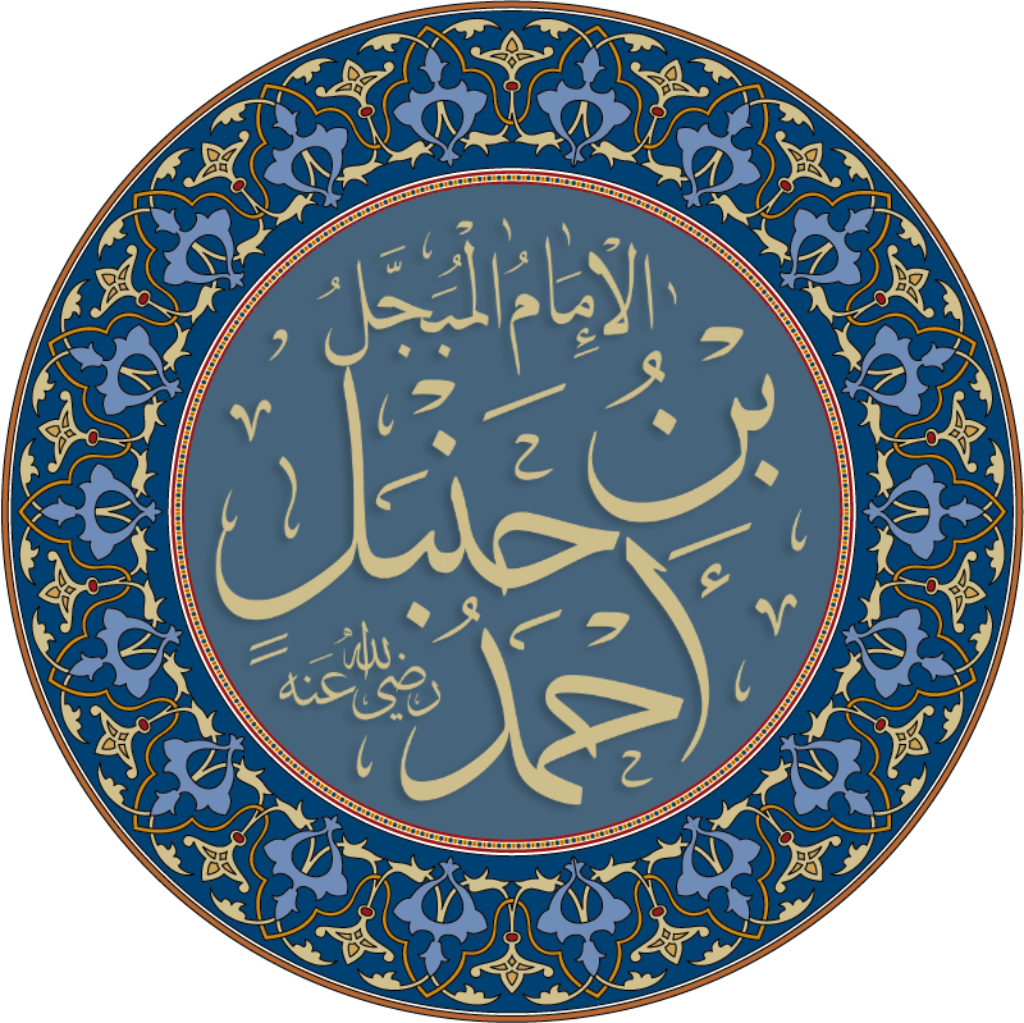 W
WAbū ʿAbdillāh Aḥmad ibn Muḥammad ibn Ḥanbal Ash-Shaybānī, often referred to as Aḥmad ibn Ḥanbal or Ibn Ḥanbal for short, was an Arab Muslim jurist, theologian, ascetic, hadith traditionist, and founder of the Hanbali school of Sunni jurisprudence — one of the four major orthodox legal schools of Sunni Islam.
 W
WAbu ‘Abd ar-Raḥmān al-Khalīl ibn Aḥmad ibn ‘Amr ibn Tammām al-Farāhīdī al-Zahrāni al-Azdī al-Yaḥmadī, known as Al-Farāhīdī, or Al-Khalīl, was an Arab philologist, lexicographer and leading grammarian of Basra based on Iraq. He is from the Zahran tribe. He made the first dictionary of the Arabic language – and the oldest extant dictionary – Kitab al-'Ayn - "The Source", introduced the now standard harakat system, and was instrumental in the early development of ʿArūḍ, musicology and poetic metre. His linguistic theories influenced the development of Persian, Turkish and Urdu prosody. The "Shining Star" of the Basran school of Arabic grammar, a polymath and scholar, he was a man of genuinely original thought.
 W
WAbu Amr Abd al-Rahman ibn Amr al-Awzai (707–774) was the chief representative and eponym of the Awza'i school of Islamic jurisprudence. Awzai was referred to by his tribe "Awza" (الأوزاع), part of Banu Hamdan.
 W
WAl-Fadl ibn Salih ibn Ali ibn Abdillah ibn Abbas (740–789) was the Abbasid governor of a number of different provinces in Syria during the late 8th-century CE. He was also governor of Egypt for a brief period of time. He was related to the Abbasid caliphs and was part of the Banu Salih branch of the Abbasid dynasty.
 W
WAl-Hakam Ibn Hisham Ibn Abd-ar-Rahman I was Umayyad Emir of Cordoba from 796 until 822 in the Al-Andalus.
 W
WAl-Khayzuran bint Atta was the wife of the Abbasid Caliph Al-Mahdi and mother of both Caliphs Al-Hadi and Harun al-Rashid. She ruled from 775 to 789 during the reign of her husband and sons and is known for her immense influence on state affairs.
 W
WAl-Layth ibn Saʿd ibn ʿAbd Al-Raḥmān Al-Fahmi Al-Qalqashandī was the chief representative, imam, and eponym of the Laythi school of Islamic Jurisprudence. He was regarded as the scholar of Egypt, even for decades following his death in 791 CE. He belongs to the Arabian tribe of Banu Fahm, who migrated to Egypt in the 7th century under the Umayyad Caliphate. He was born in 713 CE in Qalqashanda, a village in Egypt and so his nisba is Al-Qalqashandī. Despite his Arab origin, Al-Dhahabi mentioned in his encyclopaedia Siyar a`lam al-nubala that his family claimed a Persian origin and this became a common reference for later writers
 W
WAl-Qāsim ibn Muhammad ibn Abi Bakr was an important jurist in early Islam. He is considered the fourth in the Naqshbandi Golden Chain of Sufi masters. Naqshbandis also consider him to have passed the chain to his maternal grandson Ja'far al-Sadiq.
 W
WAbd al-Rahman I, more fully Abd al-Rahman ibn Mu'awiya ibn Hisham ibn Abd al-Malik ibn Marwan (731–788) was the founder of the Arab dynasty that ruled the greater part of Iberia for nearly three centuries. Abd al-Rahman was a member of the Umayyad dynasty in Damascus, and his establishment of a government in Iberia represented a break with the Abbasids, who had overthrown the Umayyads in 750.
 W
WAli ibn Musa al-Ridha, also spelled Rida or Reza in Persian, also known as Abu al-Hasan, was a descendant of the Islamic prophet Muhammad, and the eighth Imam in Twelver Shia Islam, after his father Musa al-Kadhim, and before his son Muhammad al-Jawad. He was an Imam of knowledge according to the Zaydi (Fiver) Shia school and Sufis. He lived in a period when Abbasid caliphs were facing numerous difficulties, the most important of which was Shia revolts. The Caliph Al-Ma'mun sought out a remedy for this problem by appointing Al-Ridha as his successor, through whom he could be involved in worldly affairs. However, according to the Shia view, when Al-Ma'mun saw that the Imam gained even more popularity, he decided to correct his mistake by poisoning him. The Imam was buried at the Imam Reza shrine in a city in Khorasan, which afterwards gained the name Mashhad, meaning "the place of martyrdom".
 W
WAbū al-Ḥasan ʻAlī ibn ʻAbdillāh ibn Jaʻfar al-Madīnī was a ninth-century Sunni Islamic scholar who was influential in the science of hadith. Alongside Ahmad ibn Hanbal, Ibn Abi Shaybah and Yahya ibn Ma'in, Ibn al-Madini has been considered by many Muslim specialists in hadith to be one of the four most significant authors in the field.
 W
WAli ibn Husayn Zayn al-Abidin, also known as al-Sajjad or simply Zayn al-Abidin, was the fourth Imam in Shiʻi Islam after his father Husayn ibn Ali, his uncle Hasan ibn Ali, and his grandfather, Ali. He was born, according to some sources, from Shahrbanu.
 W
WAbd ar-Rahman II (792–852) was the fourth Umayyad Emir of Córdoba in the Al-Andalus Iberia from 822 until his death.
 W
WAsad ibn Yazid al-Shaybani was an Arab general and governor for the Abbasid Caliphate, active in the early 9th century.
 W
WAtikah bint Yazid was an Umayyad princess. She was the daughter of Yazid I, and wife of Abd al-Malik ibn Marwan. Some called her the scholar cause she studied Muslim religion, especially Hadith. She was also called generous as she gave up all of her money for a poor member of Abu Sufyan's family.
 W
WAbd al-Rahman ibn Abd Allah al-Ghafiqi, also known as Abd er Rahman, Abdderrahman, Abderame, and Abd el-Rahman, was an Arab Umayyad commander of Andalusian Muslims. He unsuccessfully led into battle against the forces of Charles Martel in the Battle of Tours on October 10, 732 AD.
 W
WAbdullah Shah Ghazi was an eighth-century Muslim mystic and Sufi whose shrine is located in Clifton in Karachi, in Sindh province of Pakistan. His real name was Abdullah al-Ashtar. His father, Muhammad al-Nafs al-Zakiyya, was a descendant of Muhammad through his daughter Fatimah.
 W
WHafsa bint Sirin was an early female scholar of Islam. She has been called one of the "pioneers in the history of female asceticism in Island".
 W
WAbū Muhammad al-Ḥajjāj ibn Yūsuf ibn al-Ḥakam ibn ʿAqīl al-Thaqafī, known simply as al-Hajjaj ibn Yusuf, was perhaps the most notable governor who served the Umayyad Caliphate. He began his service with the Umayyads under Caliph Abd al-Malik, who successively promoted him as the head of the caliph's shurta, the governor of the Hejaz in 692–694, and the practical viceroy of a unified Iraqi province and the eastern parts of the Caliphate in 694. Al-Hajjaj retained the last post under Abd al-Malik's son and successor al-Walid I, whose decision-making was highly influenced by al-Hajjaj, until his death in 714.
 W
WHarun al-Rashid (; Arabic: هَارُون الرَشِيد Hārūn Ar-Rašīd; "Aaron the Orthodox" or "Aaron the Rightly-Guided", 17 March 763 or February 766 – 24 March 809 was the fifth Abbasid Caliph. His birth date is debated, with various sources giving dates from 763 to 766. His epithet "al-Rashid" translates to "the Orthodox", "the Just", "the Upright", or "the Rightly-Guided". Al-Rashid ruled from 786 to 809, during the peak of the Islamic Golden Age. He established the legendary library Bayt al-Hikma in Baghdad in present-day Iraq, and during his rule Baghdad began to flourish as a center of knowledge, culture and trade. During his rule, the family of Barmakids, which played a deciding role in establishing the Abbasid Caliphate, declined gradually. In 796, he moved his court and government to Raqqa in present-day Syria.
 W
WJābir ibn Ḥayyān, known by the kunyas Abū Mūsā or Abū ‘Abd Allāh and the nisbas al-Ṣūfī, al-Azdī, al-Kūfī, or al-Ṭūsī, is the supposed author of an enormous number and variety of works in Arabic often called the Jabirian corpus. The scope of the corpus is vast and diverse covering a wide range of topics, including alchemy, cosmology, numerology, astrology, medicine, magic, mysticism, and philosophy.
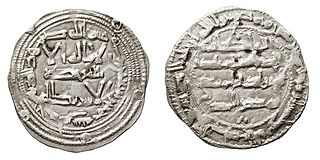 W
WHisham I or Hisham Al-Reda was the second Umayyad Emir of Cordoba, ruling from 788 to 796 in al-Andalus.
 W
WRuqayyah bint Al-Ḥusayn, was the daughter of Husayn ibn Ali and Rubab bint Imra al-Qais. Her brothers included Ali Zayn al-Abidin, Ali al-Akbar, and Ali al-Asghar. Her sisters included Fatimah as-Sughra and Fatimah al-Kubra, with the latter also being called 'Sakinah'.
 W
W'Abd ar-Rahman ibn al-Qasim al-'Utaqi (750–806), better known as Ibn al-Qasim was a prominent early jurist in the Maliki school from Egypt. He was one of Malik's main companions and had a tremendous influence in recording the positions of the school. Ibn al-Qasim was the source for Sahnun in his Mudawwana, a record of Malik's teachings. He has the same position in the Maliki school as Muhammad al-Shaybani has in the Hanafi school, in so far as both of them transmitted their respective schools and made free use of ijtihad. Ibn al-Qasim had opinions which differed from those of Malik, to the point that it was said that he was dominated by opinion.
 W
WIbrahim I ibn al-Aghlab was the first Emir of the Aghlabids in Ifriqiya (800-812).
 W
WIbrahim ibn Adham also called Ibrahim Balkhi ; c. 718 – c. 782 / AH c. 100 – c. 165 is one of the most prominent of the early ascetic Sufi saints.
 W
WMuḥammad ibn Isḥāq ibn Yasār ibn Khiyār (Arabic pronunciation: [ʔisħaːq]; according to some sources, ibn Khabbār, or Kūmān, or Kūtān, Arabic: محمد بن إسحاق بن يسار بن خيار, or simply ibn Isḥaq, ابن إسحاق, meaning "the son of Isaac" was an Arab Muslim historian and hagiographer. Ibn Ishaq collected oral traditions that formed the basis of an important biography of the Islamic prophet Muhammad.
 W
WAbu Muhammad Ismāʿīl ibn Jaʿfar al-Mubārak was the eldest son of Imam Ja'far al-Sadiq. He is also known as Isma'il Al-Ãraj ibn Ja'far. Following Ja'far's death, the Shia community split between those who believed the Imamate was passed to Musa ibn Ja'far, who would become the Twelver Shia, and those who believed that the Imamate passed to Isma'il ibn Ja'far, who would become the Isma'ili branch named after Isma'il.
 W
WJaʿfar ibn Muḥammad aṣ-Ṣādiq, commonly known as Ja‘far al-Ṣādiq or simply as-Sadiq, was an 8th-century Muslim scholar. He was the 6th Imam and founder of the Ja'fari school of jurisprudence according to Twelver and Isma'ili Shi'ites. To Sunnis, he is a major figure in the Hanafi and Maliki schools of Sunni jurisprudence and was a teacher of the Sunni scholars Abu Hanifah and Malik ibn Anas, a transmitter of hadiths, therefore a prominent jurist for Sunnis, and a mystic to Sufis. Despite his wide-ranging attributions in a number religious disciplines, no works penned by Ja'far himself remain extant.
 W
WAbū ʿUthman ʿAmr ibn Baḥr al-Kinānī al-Baṣrī, commonly known as al-Jāḥiẓ was an Arab prose writer and author of works of literature, Mu'tazili theology, and politico-religious polemics.
 W
WMalik ibn Anas, whose full name is Mālik bin Anas bin Mālik bin Abī ʿĀmir bin ʿAmr bin Al-Ḥārith bin Ghaymān bin Khuthayn bin ʿAmr bin Al-Ḥārith al-Aṣbaḥī al-Madanī, reverently known as al-Imām Mālik by Maliki Sunnis, was an Arab Muslim jurist, theologian, and hadith traditionist. Born in the city of Medina, Malik rose to become the premier scholar of prophetic traditions in his day, which he sought to apply to "the whole legal life" in order to create a systematic method of Muslim jurisprudence which would only further expand with the passage of time. Referred to as the "Imam of Medina" by his contemporaries, Malik's views in matters of jurisprudence were highly cherished both in his own life and afterwards, and he became the founder of one of the four schools of Sunni law, the Maliki, which became the normative rite for the Sunni practice of much of North Africa, Andalusia, a vast portion of Egypt, and some parts of Syria, Yemen, Sudan, Iraq, and Khorasan, and the prominent Sufi orders, including the Shadiliyya and the Tijaniyyah.
 W
WSayyid Ibrāhīm ibn Muḥammad ibn Musā al-Kādhim also known as Ibrahim al-Mujab and al-Dharir al-Kufi, was the son of Muhammad al-Abid, and grandson of Musa al-Kadhim, the seventh Twelver Shia Imam. He was the first Alid to settle in Karbala, where he died, and was buried in the Imam Husayn shrine.
 W
WAbū Saʿīd al-Muhallab ibn Abī Ṣufra al-Azdī was an Arab general from the Azd tribe who fought in the service of the Rashidun, Umayyad and Zubayrid caliphs between the mid-640s and his death. He served successive terms as the governor of Fars (685–686), Mosul, Arminiya and Adharbayjan (687–688) and Khurasan (698–702). Al-Muhallab's descendants, known as the Muhallabids, became a highly influential family, many of whose members held high office under various Umayyad and Abbasid caliphs, or became well-known scholars.
 W
WMuhammad al-Baqir full name Muhammad bin 'Ali bin al-Husayn bin Ali bin Abi Talib, also known as Abu Ja'far or simply al-Baqir (677-733) was the fifth Imam in Shia Islam, succeeding his father Zayn al-Abidin and succeeded by his son Ja'far al-Sadiq. His mother, Fatima Umm abdallah, was the daughter of the second Shia imam, Hasan ibn Ali. So he was the first Imam descended from both grandsons of Muhammad: Hasan ibn Ali and Husayn ibn Ali.
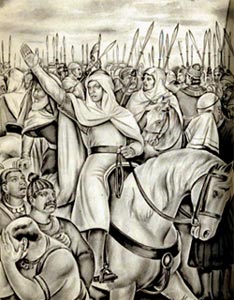 W
WMuhammad bin Qasim al-Thaqafi, also known by the laqab of Imad ad-Din, was an Arab military commander of the Umayyad Caliphate who led the Muslim conquest of Sindh and Multan from the last Brahman king, Raja Dahir in the battle of Aror. He was the first Muslim to have successfully captured Hindu territories and initiate the early Islamic India.
 W
WImam Muhammad ibn Imam Ismāʿīl alias Maymūn Al-Qaddāḥ was the son of Isma'il ibn Jafar; he was an Ismāʿīlī Imam. The majority of Ismāʿīlī follow his descendants through his son Wafi Ahmad. His descendants further founded the Fatimid Caliphate, later called the Nizari and Mustaali. Imam Muhammad ibn Imam Ismail can be considered the first proper Ismaili Imam since Imam Isma'il ibn Ja'far predeceased his father Imam Jafar-as-Sadiq and thus he was able to act independently of previous Imams. From him came all other Ismaili Imams and subsequent sub-sects of Ismailism and it' offshoots.
 W
WMusa ibn Ja'far al-Kadhim, also spelled al-Kazim, and also known as Abu al-Hasan, Abu Abd Allah or Abu Ibrahim, was the seventh Imam in Twelver Shia Islam after his father Ja'far al-Sadiq. He is regarded by Sunnis as a renowned scholar, and was a contemporary of the Abbasid caliphs Al-Mansur, Al-Hadi, Al-Mahdi and Harun al-Rashid. He was imprisoned several times; finally dying in Baghdad in the Sindi ibn Shahak prison. Ali al-Rida, the eighth Imam, and Fatemah al-Ma'sumah were among his children.
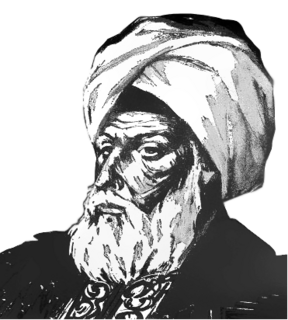 W
WMusa ibn Nusayr served as a Umayyad governor and an Arab general under the Umayyad caliph Al-Walid I. He ruled over the Muslim provinces of North Africa (Ifriqiya), and directed the Islamic conquest of the Visigothic Kingdom in Hispania.
 W
WSayyida Nafisa, full name As-Sayyidah Nafīsah bint Amīr al-Muʾminīn Al-Ḥasan al-Anwar ibn Zayd al-Ablaj ibn Al-Hasan ibn ʿAlī ibn Abī Ṭālib al-ʿAlawiyyah al-Ḥasaniyyah, was a female descendant of the Islamic Nabi (Prophet) Muhammad, and a scholar and teacher of Islam. Having taught Sunni Imam Muhammad ibn Idris ash-Shafi'i, she is the best known female scholar of ahadith in Egypt.
 W
WAbū Nuwās al-Ḥasan ibn Hānī al-Ḥakamī was a classical Arabic poet. Born in the city of Ahvaz, in modern-day Iran, to an Arab father and a Persian mother, he became a master of all the contemporary genres of Arabic poetry. He also entered the folkloric tradition, appearing several times in One Thousand and One Nights. He died during the Great Abbasid Civil War before al-Ma’mūn advanced from Khurāsān in either 199 or 200 AH.
 W
WRābiʿa al-ʿAdawiyya al-Qaysiyya was a Muslim saint and Sufi mystic. She is known in some parts of the world as, Hazrat Bibi Rabia Basri, Rabia Al Basri or simply Rabia Basri.
 W
WAbu al-‘Abbās ‘Abdu'llāh ibn Muhammad al-Saffāḥ, or Abul ‘Abbas as-Saffaḥ was the first caliph of the Abbasid caliphate, one of the longest and most important caliphates in Islamic history.
 W
WSa‘id Ibn Al-Musayyib of Medina was among the foremost authorities in jurisprudence (fiqh) among the Taba'een.
 W
WAbū ʿAbdillāh Muhammad ibn Idrīs al-Shāfiʿī was an Arab Muslim theologian, writer, and scholar, who was the first contributor of the principles of Islamic jurisprudence. Often referred to as 'Shaykh al-Islām', al-Shāfi‘ī was one of the four great Sunni Imams, whose legacy on juridical matters and teaching eventually led to the Shafi'i school of fiqh. He was the most prominent student of Imam Malik ibn Anas, and he also served as the Governor of Najar. Born in Gaza in Palestine, he also lived in Mecca and Medina in the Hejaz, Yemen, Egypt, and Baghdad in Iraq.
 W
WAbu Abdullah Sufyan ibn Said ibn Masruq al-Thawri was a Tābi‘ al-Tābi‘īn Islamic scholar and jurist, founder of the Thawri madhhab. He was also a great hadith compiler (muhaddith). The early biographer Isḥāq al-Nadīm tells us that Sufyān ibn Sa'īd al-Thawrī along with Sufyān ibn ‘Uyaynah and Ṣāliḥ ibn Ḥayy transmitted the Zaidiyyah doctrine and accounts of their adherents.
 W
WUqba ibn al-Hajjaj al-Saluli was an Umayyad governor of al-Andalus from 734 to 740, appointed by Ubayd Allah ibn al-Habhab.
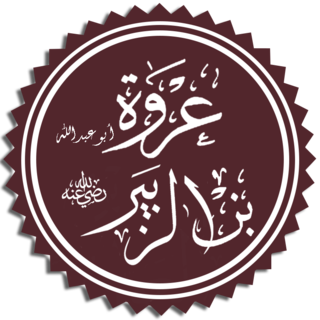 W
W'Urwah ibn al-Zubayr ibn al-'Awwam al-Asadi was among the seven fuqaha (jurists) who formulated the fiqh of Medina in the time of the Tabi‘in and one of the Muslim historians.
 W
WAbū Muḥammad Sufyān ibn ʽUyaynah ibn Maymūn al-Hilālī al-Kūfī was a prominent eighth-century Islamic religious scholar from Mecca. He was from the third generation of Islam referred to as the Tābiʽu al-Tābiʻīn, "the followers of the followers". He specialized in the field of hadith and Qur'an exegesis and was described by al-Dhahabī as shaykh al-Islam—a preeminent Islamic authority. Some of his students achieved much renown in their own right, establishing schools of thought that have survived until the present.
 W
WWalid bin Yazid or Walid II was an Umayyad Caliph who ruled from 743 until his assassination in the year 744. He succeeded his uncle, Hisham ibn Abd al-Malik.
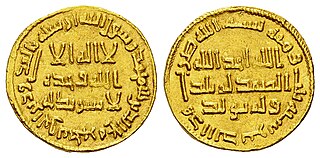 W
WYazid bin Abd al-Malik, also referred to as Yazid II, was the ninth Umayyad caliph, ruling from 9 February 720 until his death in 724.
 W
WZayd ibn ʿAlī, also spelled Zaid, was the son of Ali ibn Husayn, and great-grandson of Ali. He led an unsuccessful revolt against the Umayyad Caliphate, in which he died. The event gave rise to the Zaidiyyah sect of Shia Islam, which holds him as the next Imam after Ali ibn Husayn. In contrast, his elder half-brother Muhammad al-Baqir is seen as the next Imam of the Twelver and Isma'ili Shias. Nevertheless, he is considered an important revolutionary figure by Shias and a martyr (shaheed) by all schools of Islam, Sunnis and Shias. The calling for revenge for his death, and for the brutal display of his body, contributed to the Abbasid Revolution.